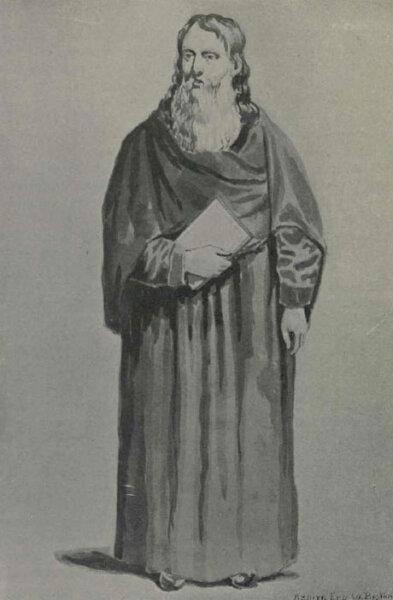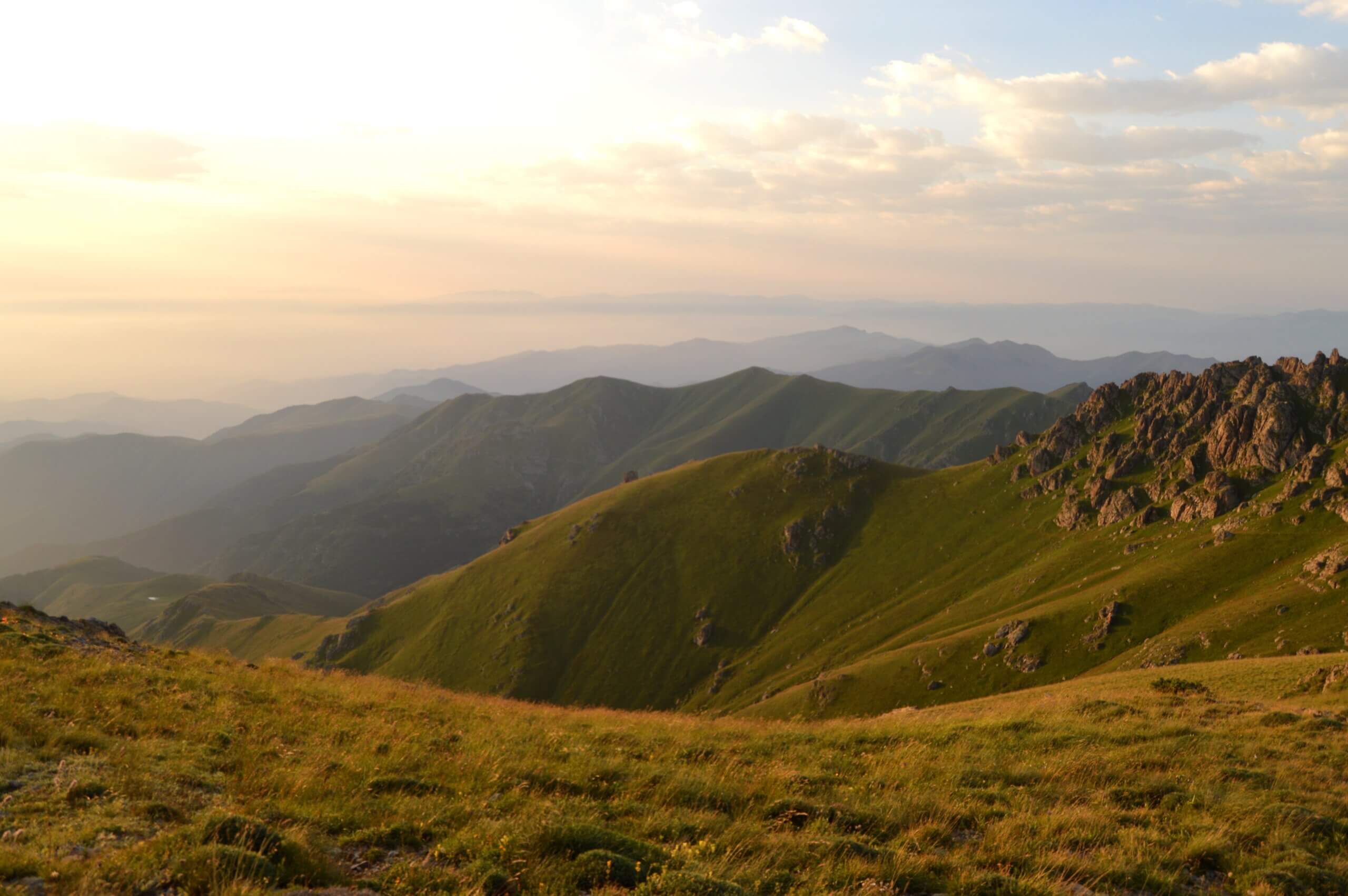Above: Mount Khustup, Armenia.
850 years ago yesterday, on August 13, 1173, after a serious illness, the Saint Bernard of Clairvaux of the East: Saint Nerses Shnorhali (the Gracious), known for his commitment to Christian unity, as well as for his theological, poetic, and musical writings.

The fourth head of the Armenian Church from 1166 to his death, or Catholicos as some Eastern patriarchs were called from the fifth century on, St. Nerses was born in 1102 into a family of Armenian princes and clergymen. A prolific writer, he left us letters, homilies, and prayers in prose. A spontaneous poet, he composed the text and the melody of almost 1200 hymns (šarakan), troparia, odes, and liturgical songs, using simple and immediate images as well as a metric close to that of Armenian folk song.
As we mentioned at the beginning, what is striking about this saint, in addition to the depth of his teaching and the holiness of his life, is his ecumenical openness. Despite his impulsive nature, after the excommunications between Rome and Constantinople in 1054, he sought a way of dialogue starting from the formula of the Council of Chalcedon (451), which confirmed the traditional teaching on the two natures in Christ, the divine and the human, united (without confusion) in one Person. In this regard, Pope John Paul II spoke of him as “the Catholicos who combined an extraordinary love for his people and its tradition with far-sighted openness to other Churches in an exemplary effort to seek communion in full unity.”[1]
Some strophes of a hymn by St. Nerses were set to music in 1921 by the Italian Ottorino Respighi († 1936), “the most aristocratic of our composers, the most brilliant of our symphonists,” as the poet Ada Negri († 1945) beautifully defines him.[2] We are referring to Mattino di luce, the last of 4 liriche su parole di poeti armeni (4 Songs based on texts by Armenian poets), for voice and piano, dedicated by the composer to his wife Elsa, who sang them for the first time in Prague on April 18, 1921, accompanied by her husband.
Respighi’s interest in the literature of what was the first nation of believers and the first Christian state was owed to his assiduity with Vittoria Aganoor († 1910), an Italian poet of Armenian origin. The anonymous Italian translation used by the composer is the simple prayer of a sinner who, experiencing three changing moods, seeks pardon from God for his sins:
Mattino di luce, sole di giustizia, / Il tuo lume si levi dentro me. / Destati, o Signore, ad assisterci: / Desta me assopito: / Fa ch’io divenga simigliante agli angioli. / Destati, o Signore. / Fatti vita di me che son morto, / Fatti luce per me ottenebrato, / Lenisci il mio dolore! / Io ti prego con la mia voce, / Io ti supplico con le mie mani: / Concedimi il dono della tua Benevolenza. / Dà ai miei occhi l’acqua perché io pianga, / Perché io pianga a grosse lagrime, / E così cancelli i miei peccati. / Gesù in nome dell’amore, / Intenerisci nel tuo amore il mio cuore di pietra. / Versa, o Signore, nella mia anima / La rugiada del tuo sangue, / E la mia anima si rallegrerà.
O morning of light, sun of justice, / Lift up your light within me. / Awaken, O Lord , to help us: / Awaken me (from) drowsiness: / Make me become like the angels. / Awaken, O Lord. / Make me alive who is dead. / Make light for me in darkness, / Soothe my grief! / I pray to you with my voice, / I implore you with my hands: / Grant me the gift of your Benevolence. / Give to my eyes water so that I may weep / So that I may weep large tears, / And thus erase my sins. / Jesus, in the name of love, / Soften in your love my heart of stone. / Pour, O Lord, into my soul / The dew of your blood, / And my soul will rejoice[3]
As for the music, the song is divided into three sections: Andante solenne, Più lento, and Ancora più largo. The melody, ariose, is very similar to that of the Gregorian chant (transposed Phrygian mode). The harmony, with its lute-like arpeggios, is based on modern Western scales (the three sections are respectively in B-flat minor, F major, and again B-flat minor), without being influenced by the four most frequent Armenian scales.
The Celestial Fantasy, op. 44, for strings, by Alan Hovhaness († 2000), an American composer of Armenian extraction, is also dedicated to the holy Armenian doctor Nerses the Gracious.
The Hovhaness’ vast musical production amounts to over 400 theatrical and symphonic works, which take their inspiration from religious suggestions, the Armenian folkloric heritage, and Indian and Chinese musical traditions, welcoming Western and Eastern elements in original way.
Completed in 1944, the Celestial Fantasy is based on music Hovhaness composed in 1935. The piece, with a “noble and heroic” accent — as the score suggests at the beginning — opens with a slow and somber motif that repeats three times with increasing intensity. The development of the initial material culminates in a four-part fugue, leading to a moving conclusion.
“How much filth there is in the Church, and even among those who, in the priesthood, ought to belong entirely to [Christ]!”, wrote the then Cardinal Ratzinger in the Way of the Cross for Good Friday 2005, meditating on the ninth station. Respighi’s and Hovhaness’s music invites us to have recourse to the intercession of St. Nerses so that the Christian community may always be led by wise teachers, holy Pastors, and reliable guides. As was the holy doctor born eight and a half centuries ago, who has Christ the Lord say of the bishops:
As I did not devote myself to pleasures but took up the priesthood for the human race, enduring the cross and death, so you too must fight to the death for the sheep of your fold, which I purchased with my blood.[4]
Photo by Robert Levonyan on Unsplash
[1] JOHN PAUL II, On the 1700th anniversary of the “Baptism of Armenia”, February 2, 2001, n. 7.
[2] Cf. P. MAURIZI, Ettore Patrizi, Ada Negri e la musica, Morlacchi, Perugia 2007, p. 41.
[3] Translation in R. C. LAKEWAY & R. C. WHITE, Italian art song, Indiana University Press, Bloomington, 1989, p. 110.
[4] N. SHNORHALI, Encyclical Letter, Jerusalem edition 1871, Chapter IV.


